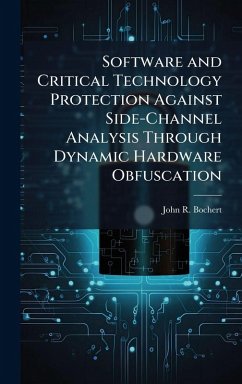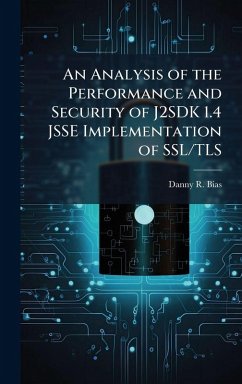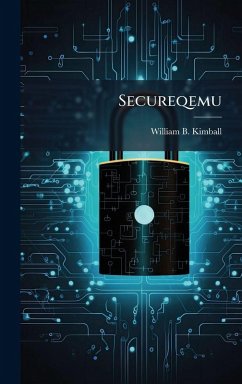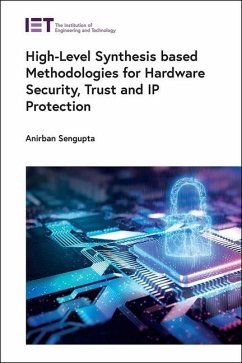
Metamorphic Program Fragmentation as a Software Protection
Versandkostenfrei!
Versandfertig in über 4 Wochen
28,99 €
inkl. MwSt.
Weitere Ausgaben:

PAYBACK Punkte
14 °P sammeln!
Unauthorized reverse-engineering of programs and algorithms is a major problem for the software industry. Every program released to the public can be analyzed by any number of malicious reverse-engineers. These reversers search for security holes in the program to exploit or try to steal a competitor's vital algorithms. While it can take years and millions of dollars worth of research to develop new software, a determined reverser can reverse-engineer the program in a fraction of the time. To discourage reverse-engineering attempts, developers use a variety of software prote tions to obfuscate...
Unauthorized reverse-engineering of programs and algorithms is a major problem for the software industry. Every program released to the public can be analyzed by any number of malicious reverse-engineers. These reversers search for security holes in the program to exploit or try to steal a competitor's vital algorithms. While it can take years and millions of dollars worth of research to develop new software, a determined reverser can reverse-engineer the program in a fraction of the time. To discourage reverse-engineering attempts, developers use a variety of software prote tions to obfuscate their programs. However, these protections are generally static, allowing reverse-engineers to eventually adapt to the protections, defeat them, and sometimes build automated tools to defeat them in the future. Metamorphic software protections add another layer of protection to traditional static obfuscation techniques. Metamorphic protections force a reverser to adjust their attacks as the protection changes. Program fragmentation combines two obfuscation techniques, outlining and obfuscated jump tables, into a new, metamorphic protection. Sections of code are removed from the main program flow and randomly placed throughout memory, reducing the programs locality. These fragments move while the program is running and are called using obfuscated jump tables, making program execution difficult to follow. This research assesses the performance overhead of a program fragmentation metamorphic engine and provides a qualitative analysis of its effectiveness against reverse-engineering techniques. Program fragmentation has very little associated overhead, with execution times for individual fragments of less than one microsecond. This low overhead allow a large numbers of fragments to be inserted into programs for protection. In addition, program fragmentation is an effective technique to complicate program of programs using two common disassembler/debugger tools. Thus, program fra This work has been selected by scholars as being culturally important, and is part of the knowledge base of civilization as we know it. This work was reproduced from the original artifact, and remains as true to the original work as possible. Therefore, you will see the original copyright references, library stamps (as most of these works have been housed in our most important libraries around the world), and other notations in the work. This work is in the public domain in the United States of America, and possibly other nations. Within the United States, you may freely copy and distribute this work, as no entity (individual or corporate) has a copyright on the body of the work. As a reproduction of a historical artifact, this work may contain missing or blurred pages, poor pictures, errant marks, etc. Scholars believe, and we concur, that this work is important enough to be preserved, reproduced, and made generally available to the public. We appreciate your support of the preservation process, and thank you for being an important part of keeping this knowledge alive and relevant.












